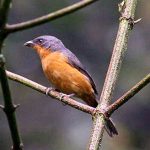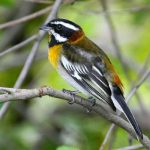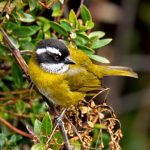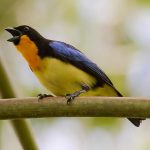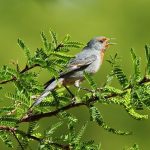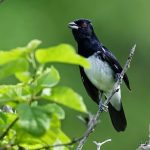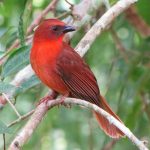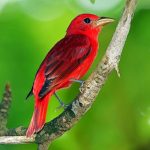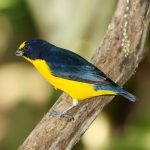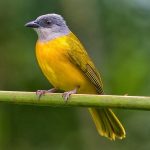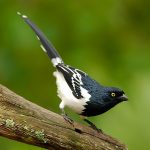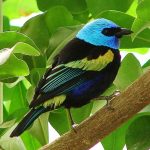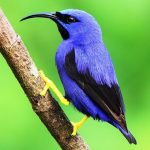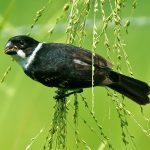Blue-naped chlorophonia
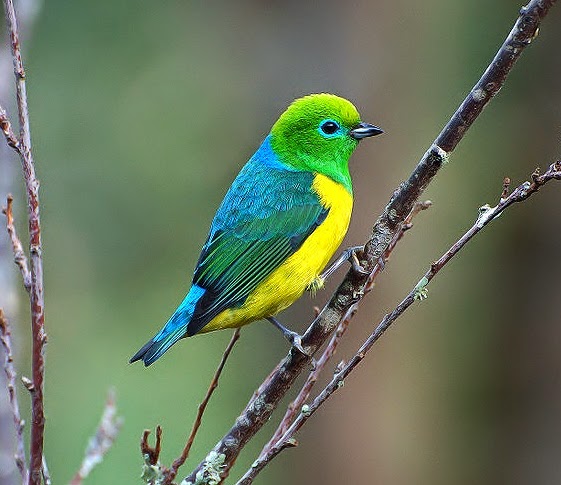
 |
| Photo by Dario Sanches (Wikipedia) |
Common name:
blue-naped chlorophonia (en); gaturamo-bandeira (en); organiste à nuque bleue (fr); tangará bonito (es); grünorganist (de)
Taxonomy:
Order Passeriformes
Family Thraupidae
Range:
This South American species has a highly disjunct distribution, with three main areas of occurrence. One population is found in southern Venezuela, south-western Guyana and marginally into northern Brazil. A second population is found along the eastern slopes of the Andes, from Venezuela to central Bolivia. The third population is found in the Atlantic forests of southern and south-eastern Brazil, and also in southern Paraguay and marginally into northern Argentina.
Size:
These birds are 10-11 cm long and weigh about 13 g.
Habitat:
The blue-naped chlorophonia is found in moist tropical forests, rural gardens and plantations. They are present from sea level up to an altitude of 2.100 m.
Diet:
They mainly eat berries and insect larvae, but also small leaves and nectar.
Breeding:
Blue-naped chlorophonias breed in December-July. The nest is a globular structure with side entrances, made of moss and rootlets, and placed in a road bank with overhanging vegetation or within a bromeliad, about 1 m above the ground. The female lays 2-3 whitish eggs with reddish-brown speckles, which she incubates alone for 17-20 days. The chicks are fed by both parents and fledge 20-21 days after hatching.
Conservation:
IUCN status – LC (Least Concern)
This species has a very large breeding range and is described as common. The population is suspected to be stable in the absence of evidence for any declines or substantial threats.
